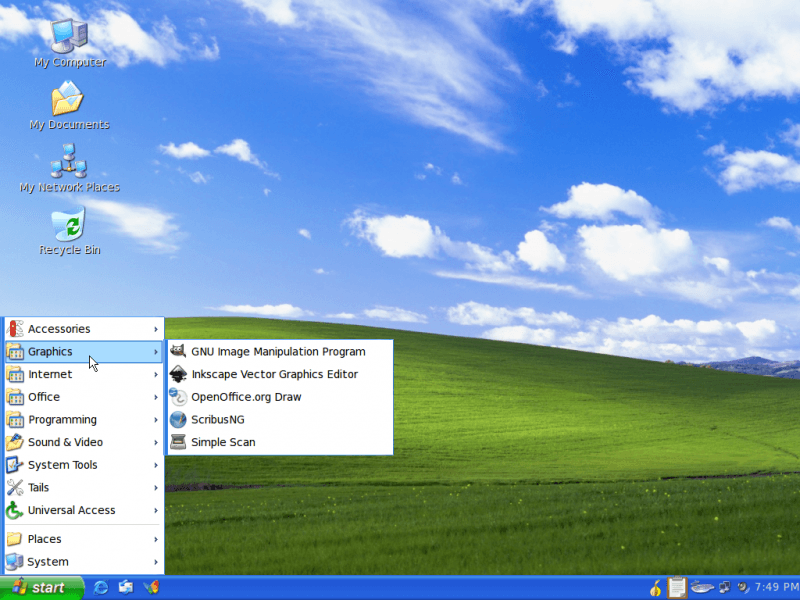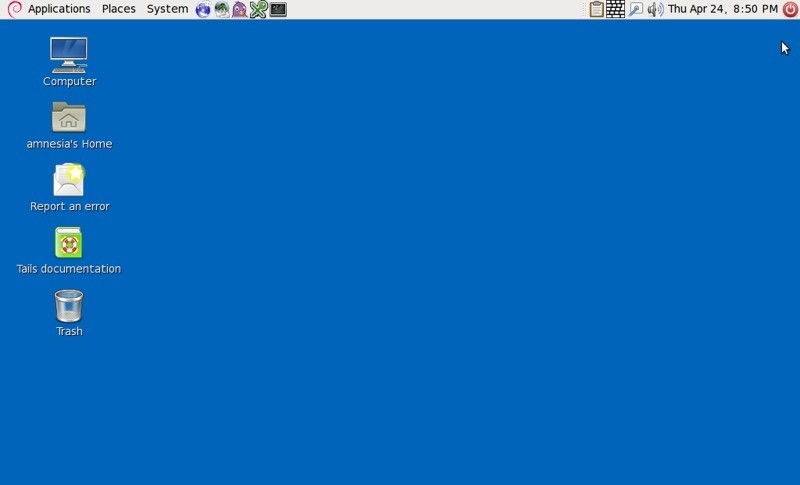Tails received a lot of press a couple of weeks ago when it was disclosed that Edward Snowden was using it to avoid NSA snooping. This portable operating system's sole purpose is preserving your privacy and anonymity online by relying on the Tor network and other tools to keep your activity secret.
It's designed to boot from a USB flash drive, CD/DVD or SD card and leaves no trace on the computer you are using unless you ask it explicitly. This means you can go up to any machine, plug in your flash drive, boot your operating system, and work or communicate without worrying about who's looking.
Tails comes with several built-in applications pre-configured with security in mind: web browser, instant messaging client, email client, office suite, image editor, and more. Cryptographic tools such as LUKS are used for disk encryption, for example, while the preloaded Firefox extension HTTPS Everywhere, as well as OpenPGP and OTR are used to encrypt your web traffic, emails, documents and instant messaging conversations.
Upon booting Tails you'll see a login window and a prompt to see more options, where you can set a password and the Windows XP camouflage.

The idea behind the latter is to avoid unwanted attention. Let's say you're sitting in a library with 10 computers one next to another. It'd look odd if yours is the only one running Linux; the XP skin should help you fly under the radar.

If haven't given Linux a try before, the camouflage feature is also a great way to get acquainted. With this skin Tails not only looks like XP but you have a working start menu, tray, and explorer – all the Windows basics.
As mentioned above, Tails comes preloaded with productivity and other useful software. OpenOffice is used for word processing, spreadsheets, and presentations, Pidgin for IMs, Tor for browsing, and Claws for your emails.
If you are interested in giving Tails a try you can download the ISO image here. Once you have the file you can either run it from a USB drive within Windows using VirtualBox or booting into it. Here's a quick guide covering both options.
